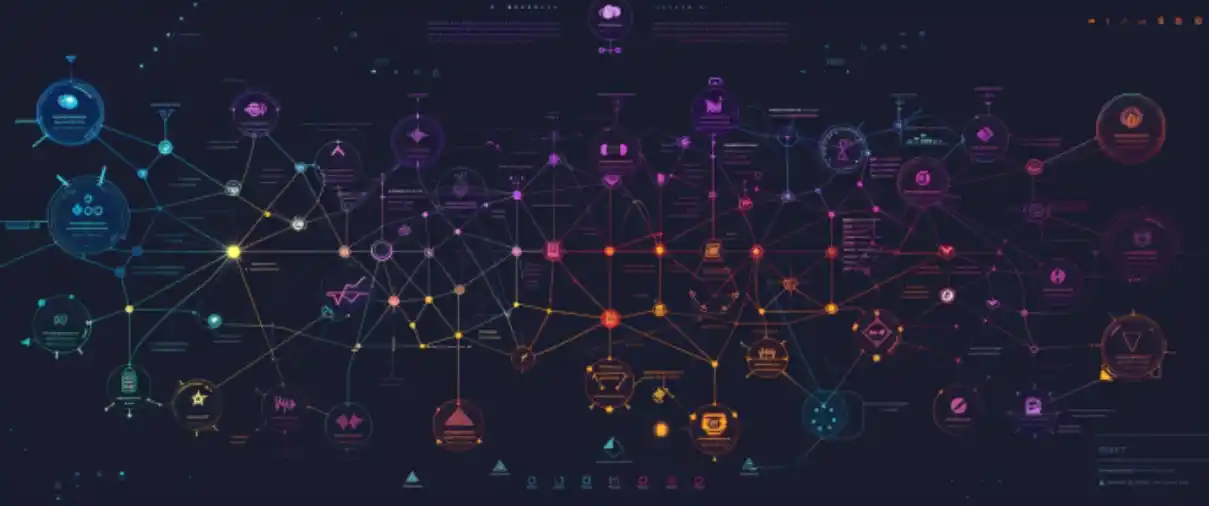In the world of blockchain, transparency and data accessibility play a key role. Blockchain explorers enable users to view and analyze transactions, addresses, and smart contracts. Blockscout stands out as an open and versatile tool for networks compatible with the Ethereum Virtual Machine (EVM).
Contents:
- History and Origin of Blockscout
- Key Features and Capabilities
- Supported Networks and Projects
- Role in Decentralization and Open Source
- Community Interaction and Development
- Use Cases and Integrations
- Future of Blockscout and Development Plans
- Conclusion
History and Origin of Blockscout
Blockscout was developed by the POA Network team in 2018 as an open blockchain explorer for EVM-compatible networks. The project's goal is to provide the community with a tool to view and analyze blockchain data with open-source code, setting it apart from closed solutions like Etherscan. Since its launch, Blockscout has received support from various organizations, including the Ethereum Foundation and Gnosis DAO, contributing to its growth and adoption.
Key Features and Capabilities
Blockscout provides users with a wide range of capabilities for interacting with blockchain data:
- Transaction Viewing: Users can search and view transaction details, including sender, recipient, amount, and status.
- Block Analysis: Examine block information such as block number, hash, creation time, and list of transactions.
- Working with Smart Contracts: Users can view, verify, and interact with smart contracts directly through the Blockscout interface.
- Token Support: Display information about ERC-20 and ERC-721 tokens, including their transactions and holders.
- API for Developers: Offers API integration for applications and services, simplifying blockchain-based development.
Supported Networks and Projects
Blockscout supports multiple EVM-compatible networks, including:
- Ethereum Mainnet and Test Networks: Users can view data from the Ethereum main network and test networks like Ropsten and Kovan.
- Ethereum Classic: Support for the Ethereum Classic network to view transactions and smart contracts.
- Optimism and Other L2 Solutions: Integration with second-layer solutions such as Optimism, providing users with access to their data.
- Gnosis Chain: Support for the Gnosis Chain, previously known as xDai, for viewing transactions and smart contracts.
Thanks to its versatility, Blockscout is used by more than 800 networks and projects, including various L1 and L2 solutions.
Role in Decentralization and Open Source
One of Blockscout's key advantages is its open-source code, available on GitHub. This allows developers and organizations to deploy their own instances of Blockscout, customize them to their needs, and contribute improvements. Thus, Blockscout promotes decentralization by providing the community with a tool for independent blockchain data analysis.
Community Interaction and Development
Blockscout actively engages with the developer and user community. The project is regularly updated, with new features added and bugs fixed. The Blockscout team maintains open communication through various channels, including Discord and GitHub, where users can ask questions, suggest improvements, and report issues.
Use Cases and Integrations
Blockscout is widely used in various projects and networks where its functionality enhances transparency and data accessibility. In the EVE Frontier project, it serves as a tool for viewing transactions and interacting with smart contracts, making blockchain data handling convenient and understandable for users.
In the Garnet test network, Blockscout is used as the foundation for the Garnet Chain Explorer, enabling the analysis of transactions and wallet activity. Similarly, in the MUD Explorer project, this tool displays data and tables related to various namespaces, providing users with an intuitive interface for working with blockchain information.
Future of Blockscout and Development Plans
Blockscout continues to evolve to meet the needs of the blockchain ecosystem. The project team is actively working on the following directions:
- Support for New Blockchains: Inclusion of more networks, not only EVM-compatible but also other ecosystems like Substrate or Solana. This will expand Blockscout's use and attract new communities of developers and users.
- Performance Improvements: Optimization for large networks and handling big data volumes, including indexing algorithm enhancements and caching technologies for faster operation.
- API Functionality Expansion: Development of more powerful integration tools to help developers use blockchain data more easily in their applications, which is especially important for analytical platforms and decentralized applications (dApps).
- User Interface (UI/UX): Updating the interface for more convenient and intuitive interaction, including flexible data display settings, a dark theme, and simplified smart contract handling.
- Modular Structure: Planned implementation of a modular architecture that will allow developers to integrate only the necessary components of Blockscout into their projects, ensuring flexibility and adaptation to specific tasks.
- Educational Materials and Documentation: The Blockscout team is actively developing training programs and detailed documentation for developers to encourage broader adoption of the tool across projects.
Conclusion
Blockscout is more than just a blockchain explorer; it is a vital tool for the entire blockchain ecosystem. Thanks to its openness and flexibility, it has become the choice for many Ethereum Virtual Machine-compatible networks and decentralized projects. Its contribution to transparency, data accessibility, and decentralization makes Blockscout an integral part of modern blockchain solutions.
The future of Blockscout looks promising due to its active community engagement and ongoing functionality improvements. This project will continue to be at the forefront of technology, supporting the ideals of openness and decentralization that underpin the blockchain ecosystem.












